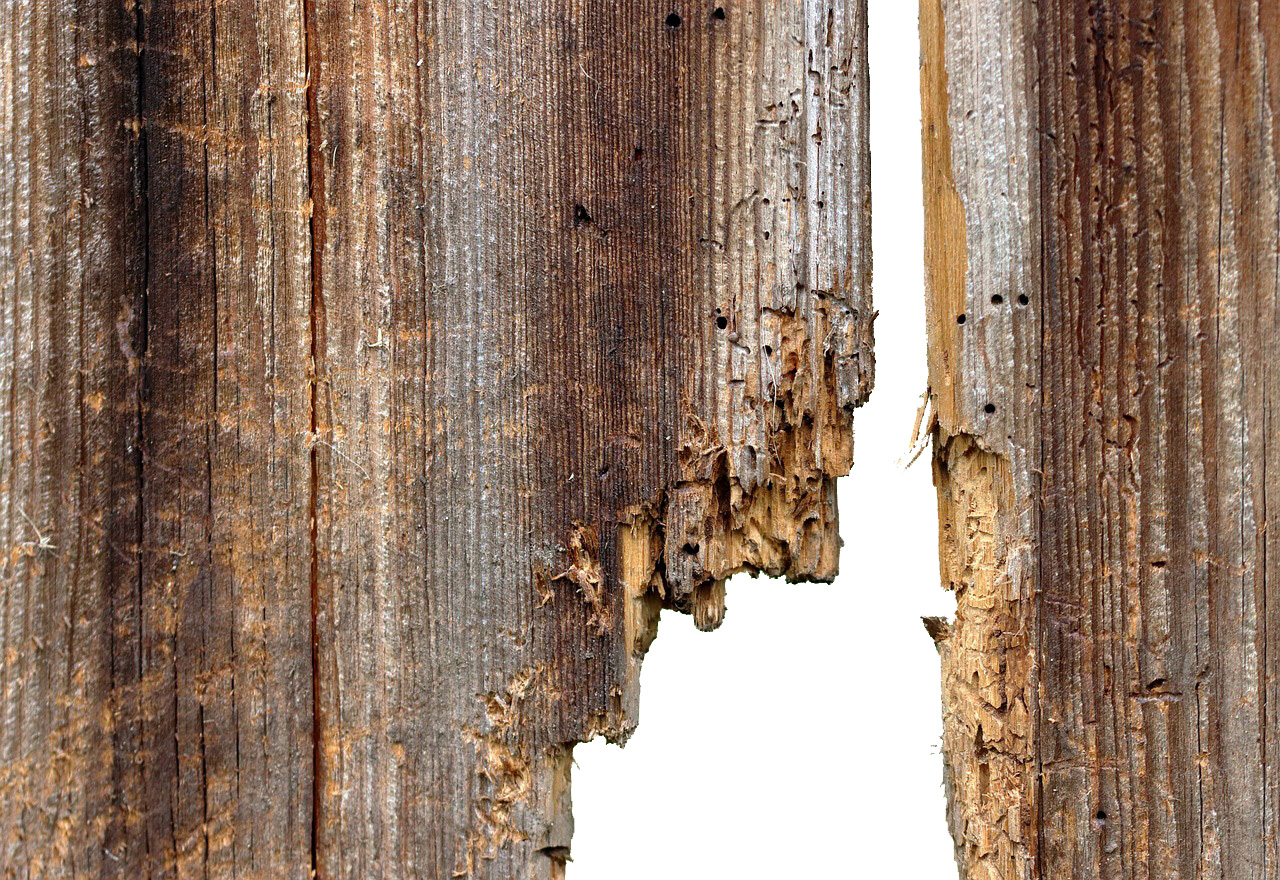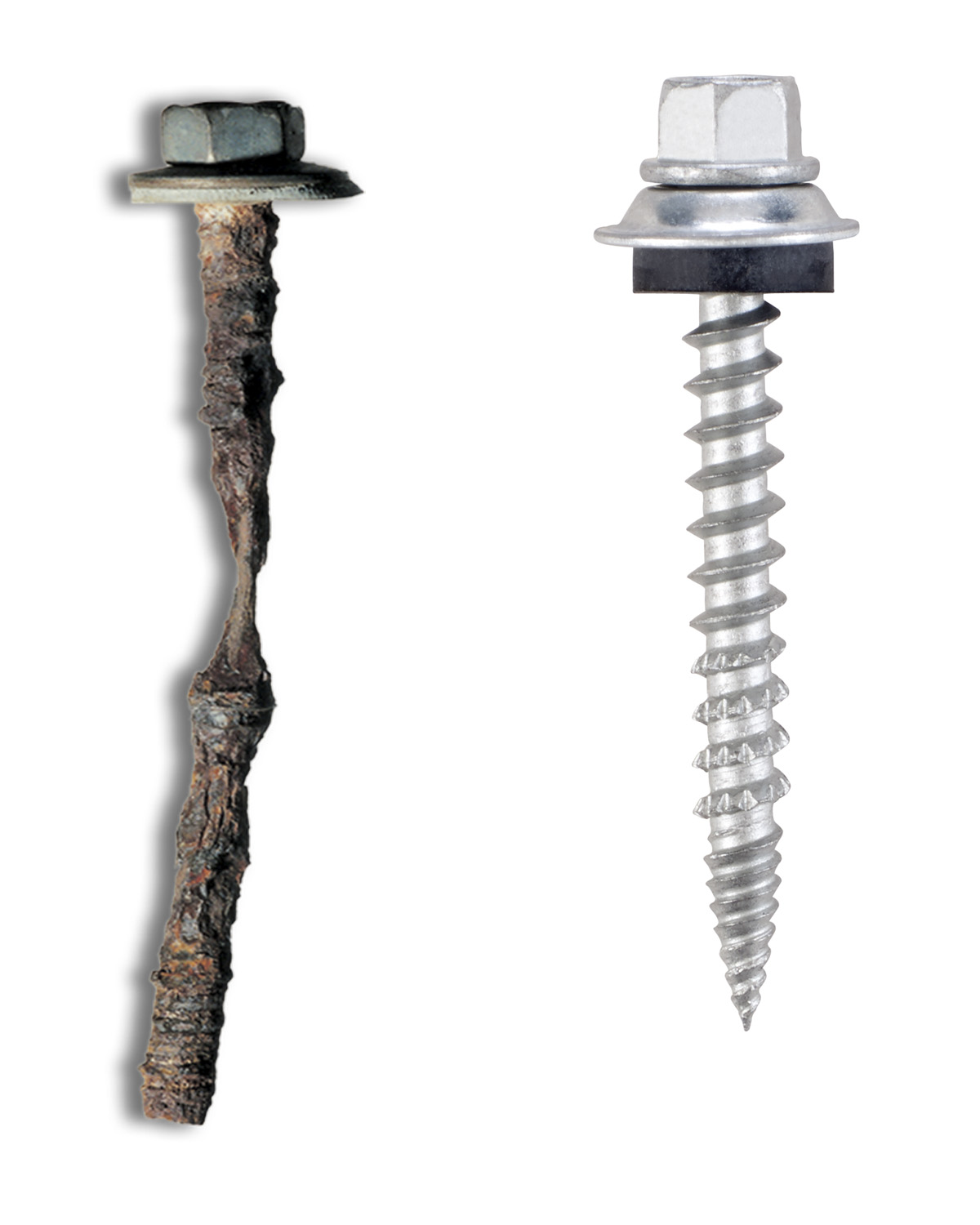How pressure-treated lumber responds to zinc, galvanized, and stainless steel screws
When planning a construction project, it’s critical to understand how your materials will interact over time. Pressure-treated lumber is great for preventing wood rot when exposed to moisture. However, it can cause problems for certain fasteners, putting your project’s structural integrity at risk. Across zinc, galvanized, and stainless steel screws, this article will explore which fasteners to avoid using with pressure-treated lumber along, which are least likely to corrode, and which the international building code explicitly approves.

What is pressure-treated lumber & when should it be used?
If you install a standard piece of lumber directly in the ground, it will decay over time. The same is true anywhere there is moisture present, including interior spaces that aren’t conditioned.Wood is pressure-treated for use where moisture will be present, particularly in projects where lumber will be in direct contact with the ground. The goal of pressure-treating lumber is to preserve the wood against decay. All kinds of lumber used in construction can be pressure-treated to increase their moisture resistance.
Pressure-treated wood has many chemicals involved, which have changed over the years. Recent shifts have reduced, but not eliminated, the level of corrosion to fasteners. Today, copper azole and alkaline copper quaternary are two of the most commonly used chemicals for pressure-treating wood. While these chemicals help preserve lumber, they do the opposite to metal fasteners, causing accelerated corrosion.
Learn more about corrosion prevention in construction.
How do zinc & galvanized screws respond to pressure-treated lumber?
Even though the way of pressure-treating lumber has adapted, specific fasteners will still experience accelerated corrosion. Specifically, zinc and hot-dipped galvanized screws will corrode over time when used in pressure-treated lumber. However, the thickness of the zinc coating will determine how quickly corrosion will occur.Zinc protects the fastener from the chemicals in pressure-treated lumber, so the thinner the zinc coating, the faster it will corrode. Electroplated zinc has a thin coating, while hot dipped galvanized is much thicker. Because of this, hot-dipped galvanized is the only approved fastener zinc coating for use in pressure-treated wood.
Learn more about different types of zinc fasteners and their applications.

How do stainless steel screws respond to pressure-treated lumber?
While hot-dipped galvanized screws provide moderate corrosion resistance, stainless steel fasteners are the best option for use in pressure-treated lumber because they aren’t susceptible to corrosion like other fasteners. The international building code approves all stainless steel fasteners for use in pressure-treated lumber.Although both hot-dipped galvanized and stainless steel screws are explicitly approved for use in pressure-treated lumber, these fasteners should never be used together. When these dissimilar metals are in contact with each other, the introduction of an electrolyte will begin accelerating corrosion.
Since pressure-treated lumber is often used in spaces where moisture (an electrolyte) is present, if both stainless steel and hot-dipped galvanized fasteners are used, the galvanized fastener will begin corroding very quickly.
Stainless steel screws are more resistant to other causes of corrosion than other fastener options. When used in outdoor applications susceptible to the elements, stainless steel screws are the optimal choice.
Explore our lines of 304, 316, and 410 stainless steel screws with different levels of corrosion resistance, strength, affordability, and dissimilar metal compatibilities.
Are there any other fastener options for use in pressure-treated lumber?
The only fasteners explicitly approved by the international building code are hot-dipped galvanized and stainless steel. However, there are some proprietary coatings that are acceptable for use in pressure-treated lumber.Our proprietary line of ConnexTite™ Structural Wood Screws is designed for use in pressure treated lumber. Our proprietary coating meets or exceeds the corrosion resistance of hot-dipped fasteners coated in accordance with ASTM A153.
The large flange head maximizes clamping force for the tightest connections, ensuring these fasteners are approved for structural connections per IBC 1603. As a bonus, our ConnexTite Structural Wood Screws are made to install twice as fast, cutting costs by 75%.
Discover how ConnexTite™ can double installation speeds in single and mutli-ply trusses, columns, headers, and joint fastening for a fourth of the cost.
Select appropriate fasteners for your next project
If you’re drilling into pressure-treated lumber for your next project, the only types of fasteners you should leverage are hot-dipped galvanized zinc, stainless steel, or a proprietary line of connectors. This will ensure the longevity of your project and protect against corrosion failure.No matter which fastener material you choose for your project, it’s important to keep pull-out strength in mind. The length and width of your fastener, paired with the thickness of your lumber will impact tensile strength, which could cause your project to fail if not calculated correctly.
If you’re still unsure about which fasteners are optimal for your project, members of the SFS team are ready to help. Call 610-376-5751 to consult with a specialist.

 English (Canada)
English (Canada)
 čeština (Česká republika)
čeština (Česká republika)
 magyar (Magyarország)
magyar (Magyarország)
 Deutsch (Deutschland)
Deutsch (Deutschland)
 eesti (Eesti)
eesti (Eesti)
 español (España)
español (España)
 português (Portugal)
português (Portugal)
 suomi (Suomi)
suomi (Suomi)
 français (France)
français (France)
 English (United Kingdom)
English (United Kingdom)
 italiano (Italia)
italiano (Italia)
 Nederlands (Nederland)
Nederlands (Nederland)
 norsk, bokmål (Norge)
norsk, bokmål (Norge)
 polski (Polska)
polski (Polska)
 svenska (Sverige)
svenska (Sverige)
 Türkçe (Türkiye)
Türkçe (Türkiye)

